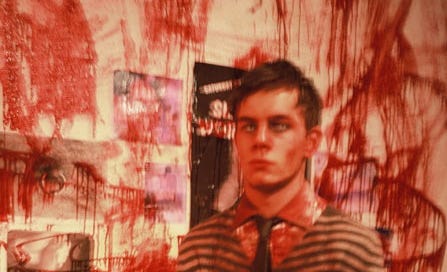This is a preview of my essay that will be included in Bruce Labruce’s forthcoming book of photographs, The Revolution is My Boyfriend, now available for pre-order from Baron Books.
Penetrating the annals of queer cinema (all puns intended), one of the great recurring tropes we encounter is a schismatic dissection and, oftentimes, conflagration between the so-called high and low: the lofty ideals of connoisseurial faggotry that one finds in the auteur tradition, on the one hand, and the ramrod pornographic cheesecakery that aims less to enlighten and more to tighten cocks and assholes. In Rabelaisian terms, there is the cinema that speaks to the upper half of the body as opposed to the lurid scenes on those glowing screens meant to spur action in the lower half. In a certain loose sense: art and entertainment. In a Cartesian sense: mind and body. Corresponding to an ostensible sense of pride and shame...
Well, we could go on all day, but you get the idea. These two canons were evolving separately and distinctly, with next to no overlap. Then, in the early 1990s, along came a spider who sat down beside her and proceeded to make porridge out of this proper distinction. The spider came with an outrageously silly name, tattoos, body piercings, and a mohawk, and, true to his punk fashion, commenced work on a new translation of high cinema tropes through the lowest of the lo-fi patois then available: the guerrilla tactic of super-8 filmmaking.
Keep reading with a 7-day free trial
Subscribe to Travis Jeppesen to keep reading this post and get 7 days of free access to the full post archives.



